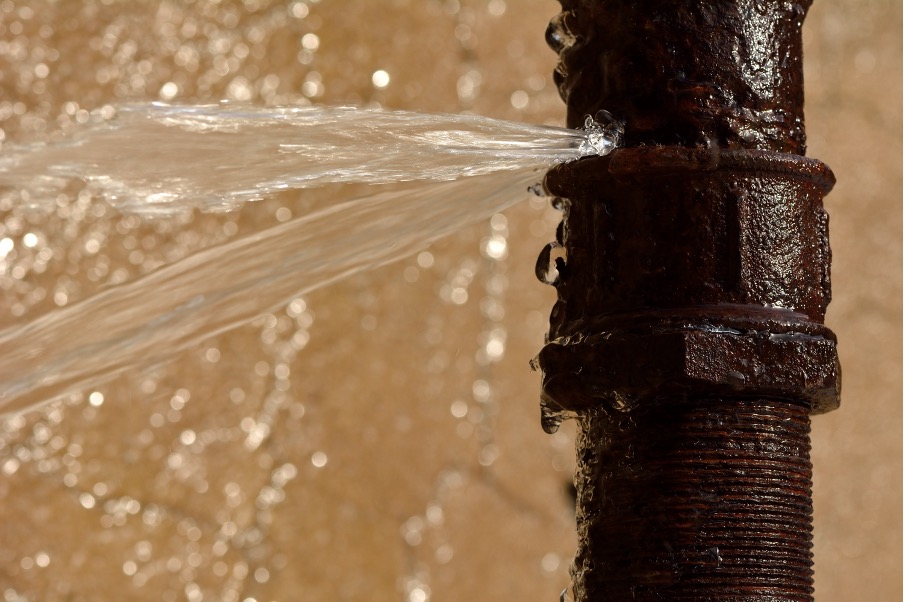Unmasking Hidden Water Line Leaks: Six Effective Detection Methods
Unmasking Hidden Water Line Leaks: Six Effective Detection Methods
Blog Article
This post down below relating to Finding hidden leaks is rather insightful. Check it out yourself and decide what you think about it.

Early discovery of leaking water lines can alleviate a potential disaster. Besides conserving you money, it will decrease the aggravation as well as frustration. The moment you discover a leak, calling your plumber for repair services is the most effective service. Nevertheless, some little water leaks may not show up. If you can not spot it with your naked eyes, below are some hacks that assist.
1. Take A Look At the Water Meter
Every residence has a water meter. Checking it is a surefire way that assists you uncover leaks. For beginners, turn off all the water sources. Guarantee no person will flush, utilize the tap, shower, run the cleaning equipment or dishwashing machine. From there, most likely to the meter as well as watch if it will certainly transform. Given that no person is utilizing it, there should be no movements. If it relocates, that suggests a fast-moving leakage. If you spot no changes, wait an hour or two and examine back once more. This suggests you might have a sluggish leakage that might also be underground.
2. Check Water Consumption
If you identify unexpected changes, in spite of your intake being the exact same, it implies that you have leaks in your plumbing system. An abrupt spike in your expense shows a fast-moving leakage.
Meanwhile, a constant boost every month, despite the very same habits, shows you have a slow-moving leakage that's additionally gradually intensifying. Call a plumber to completely check your residential or commercial property, particularly if you really feel a warm location on your floor with piping beneath.
3. Do a Food Coloring Examination
When it pertains to water consumption, 30% comes from commodes. Test to see if they are running properly. Decrease flecks of food color in the storage tank and wait 10 minutes. If the shade somehow infiltrates your bowl during that time without flushing, there's a leak in between the tank as well as dish.
4. Asses Exterior Lines
Don't fail to remember to inspect your outside water lines as well. Must water leak out of the link, you have a loosened rubber gasket. One little leakage can throw away bunches of water and also increase your water costs.
5. Assess the scenario and also check
House owners must make it a routine to inspect under the sink counters and even inside cabinets for any bad odor or mold and mildew development. These 2 red flags indicate a leakage so punctual focus is called for. Doing regular assessments, even bi-annually, can save you from a significant issue.
Check for stainings and damaging as the majority of pipes and also devices have a life expectancy. If you suspect leaking water lines in your plumbing system, do not wait for it to intensify.
Early discovery of dripping water lines can alleviate a potential disaster. Some small water leaks might not be noticeable. Examining it is a proven method that helps you find leakages. One tiny leakage can throw away heaps of water and increase your water costs.
If you think dripping water lines in your plumbing system, do not wait for it to escalate.
WARNING SIGNS OF WATER LEAKAGE BEHIND THE WALL
PERSISTENT MUSTY ODORS
As water slowly drips from a leaky pipe inside the wall, flooring and sheetrock stay damp and develop an odor similar to wet cardboard. It generates a musty smell that can help you find hidden leaks.
MOLD IN UNUSUAL AREAS
Mold usually grows in wet areas like kitchens, baths and laundry rooms. If you spot the stuff on walls or baseboards in other rooms of the house, it’s a good indicator of undetected water leaks.
STAINS THAT GROW
When mold thrives around a leaky pipe, it sometimes takes hold on the inside surface of the affected wall. A growing stain on otherwise clean sheetrock is often your sign of a hidden plumbing problem.
PEELING OR BUBBLING WALLPAPER / PAINT
This clue is easy to miss in rooms that don’t get much use. When you see wallpaper separating along seams or paint bubbling or flaking off the wall, blame sheetrock that stays wet because of an undetected leak.
BUCKLED CEILINGS AND STAINED FLOORS
If ceilings or floors in bathrooms, kitchens or laundry areas develop structural problems, don’t rule out constant damp inside the walls. Wet sheetrock can affect adjacent framing, flooring and ceilings.
https://www.servicemasterbyzaba.com/blog/how-to-detect-water-leakage-in-walls/

Do you like more info about Top leak detection hacks? Try leaving a short review further down. We will be interested to hear your feelings about this blog. We hope that you visit us again in the near future. Loved our blog? Please share it. Help someone else locate it. Thank-you for going through it.
Water trouble? Dial. Report this page